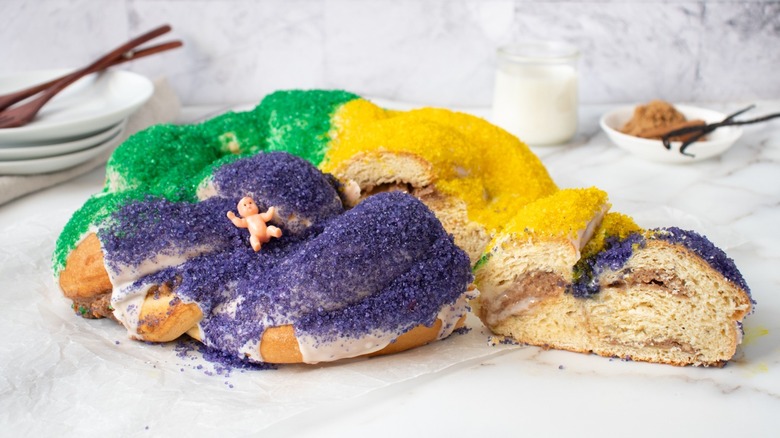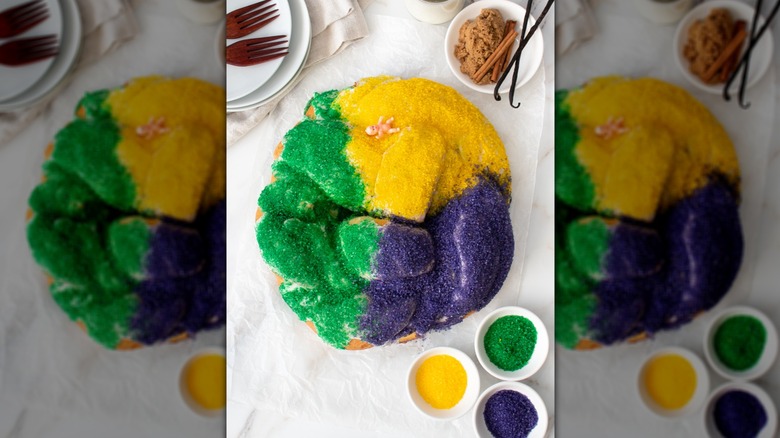Enjoy A Taste Of New Orleans At Home With Mardi Gras King Cake
The day before Ash Wednesday is known by many names, some of which have to do with all of the tasty foods you'll be giving up if you adhere to a religion that requires Lenten fasting. While Pancake Day is the most obvious, Fat Tuesday — or Mardi Gras, en français — refers in a more general sense to all the goodies you'll need to finish off before midnight. Mardi Gras festivities may involve all manner of tasty foods, drinks, and general revelry (merriment in general not being considered entirely Lent-appropriate), but many celebrations call for a king cake. Interestingly enough, the "king" in the name doesn't refer to the head of any particular krewe, but rather to the three kings of biblical fame since the cake was originally intended for the feast of Epiphany on January 6.
Whether you choose to observe Three Kings Day, as the holiday is sometimes known, or Mardi Gras, this brightly-colored king cake will add a touch of festivity to the proceedings. As developer Patterson Watkins describes her king cake recipe, it's not too cake-like, despite the name, but is more akin to what she calls a "well-dressed sweet bread." While king cakes come in many different varieties, Watkins' version uses brioche dough as a base with a filling made from cream cheese flavored with brown sugar and cinnamon. This king cake does take time and effort, but is something that should be within the reach of anyone who's mastered basic bread making.
The decorations are what make the cake feel festive
What really makes or breaks a king cake isn't the bread and filling, although these are certainly tasty. Instead, the crucial part of the recipe, and something that can cover up myriad cosmetic flaws if your bread-braiding skills aren't up to scratch, is the colorful topping. Watkins makes hers out of a powdered sugar gaze covered with sanding sugar in the traditional Mardi Gras colors of yellow, green, and purple. If you have no sanding sugar you can always make a less-coarse DIY version by adding a few drops of food coloring to granulated sugar, or opt for the equally festive (if less traditional) sprinkles in the same color scheme.
Of course, no king cake is complete without a surprise inside. Similar to the fortune-telling charms inside the Irish Halloween fruitcake known as barmbrack or the trinkets, coins, and flowering branch inside the Bulgarian pastry banitsa, finding the plastic baby in a king cake is meant to bring good luck to whoever winds up with it in their slice. As Watkins tells it, "Whoever finds the hidden surprise/baby gets to be king for the day," although you might not feel so fortunate if whoever serves you the baby-bearing cake holds to the tradition that finding this prize means you're responsible for buying (or baking) next year's cake. Still, you now have a recipe, so you can always get in some baking practice before the next Mardi Gras (or Epiphany) rolls around.

